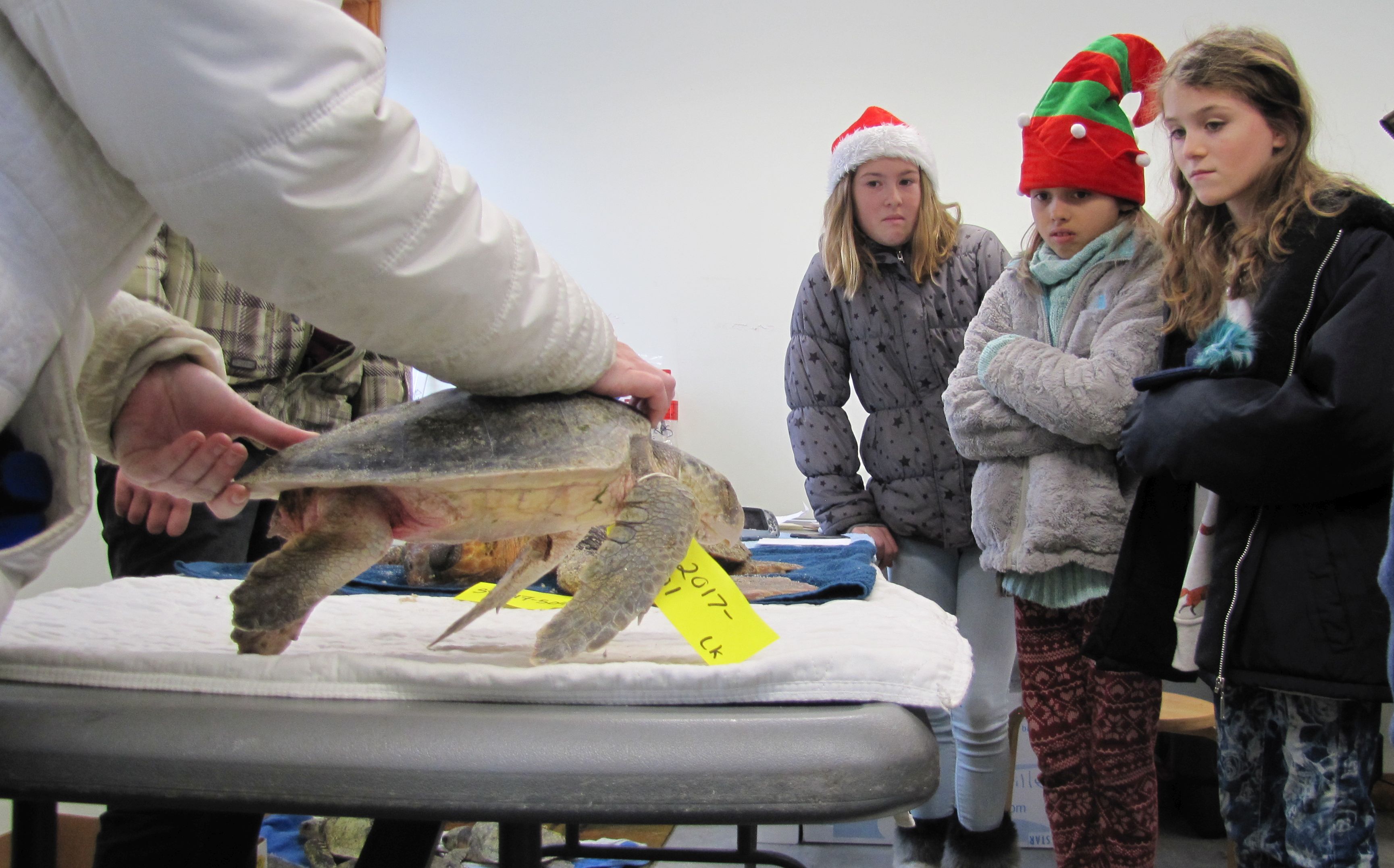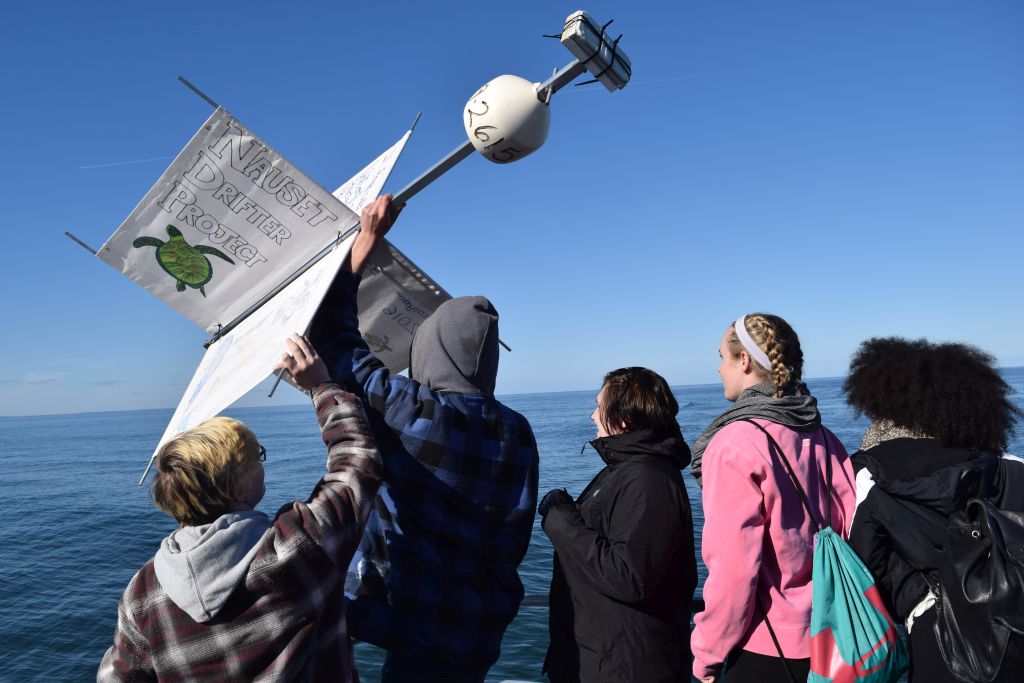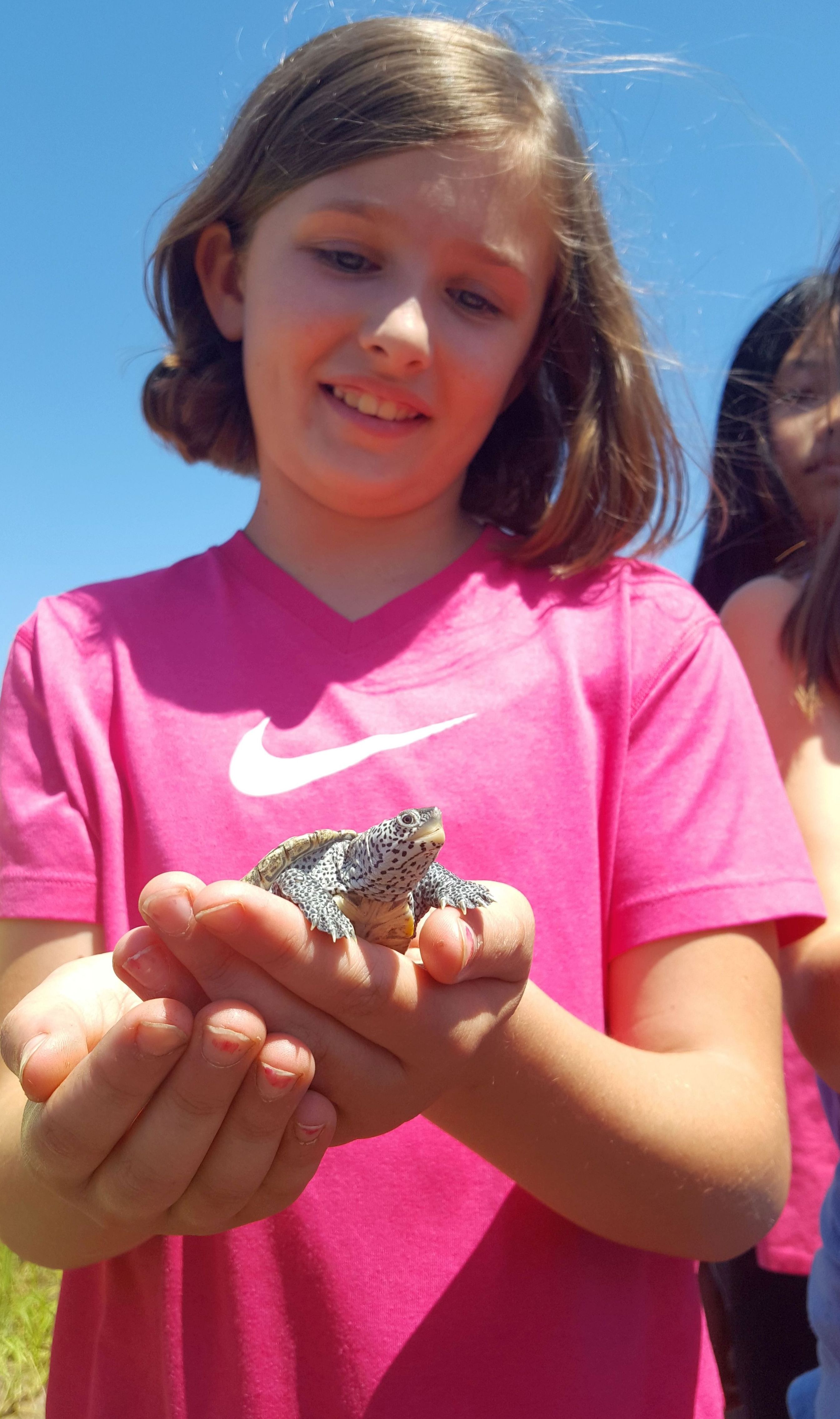“Is it dead?” is often one of the first questions students will ask when seeing their first cold-stunned sea turtle.

Wellfleet Elementary fifth graders bundle up in our sea turtle ICU where the temperature must be maintained at 50 to 55 degrees to ensure turtles don’t warm up too quickly. It’s often very hard to tell if a cold-stunned turtle is alive or dead. Almost all of the turtles that strand in the fall are juveniles.
Because of the Cape’s fall stranding phenomenon, local kids have a unique opportunity to view juvenile sea turtles that are rarely seen. Sometimes, an inert turtle will show the slightest movement, a hopeful sign that invariably produces a collective “Whoa!!” from students.
Endangered and threatened sea turtles have been stranding on the Cape’s beaches in the fall since well before today’s students—and maybe even their parents—were born.
For thirty years, Wellfleet Bay has been building a successful sea turtle stranding response program that includes projecting where cold-stunned turtles are likely to strand, assigning volunteer and staff to walk beaches, and developing best practices on retrieving turtles, holding them, and transporting them to the New England Aquarium for medical care.

Turtle staff member Elora Grahame measures a loggerhead as Truro second graders watch.
Cape Cod school students live close to where all this exciting work goes on and yet many are unaware of it or know little about it. But the sanctuary’s education staff is changing this by bringing turtle curricula into local classrooms, from preschool age to high school, from Provincetown to Harwich.
For young children, the program may start with classroom lessons about sea turtles followed by beach patrols to look for cold-stunned animals. Some older elementary students have an opportunity to watch our staff weigh and measure turtles in preparation for their drive to the aquarium.
“Turtles are a really appealing subject to kids,” according to educator Spring Beckhorn. “Especially with sea turtles, there’s a genuine desire to help an animal in distress and to teach others what they can do.”

Nauset high school students launch a drifter that they assembled and tracked via GPS to get a better understand of surface currents in Cape Cod Bay (photo by Olivia Bouque)
For high school students, our curriculum includes getting on the water to deploy “drifters”, submersible devices that resemble box kites to track surface currents in Cape Cod Bay. The goal is to gain insight into how currents, winds, and tides affect the movements of hypothermic turtles and gauging where they may come ashore.
Students from Harwich to Truro have been involved in another successful turtle conservation program at the sanctuary—the protection of threatened northern diamondback terrapins and their nests and hatchlings.
Last year, students at Orleans Elementary successfully “head-started” a terrapin hatchling, a

Orleans fifth grade releases a diamondback terrapin they head-started the previous winter (photo by Sheila Hoogeboom).
process aimed at giving a young turtle an extra boost in its first year of life. With the advantages of central heating and regular meals, the one-year-old turtle morphed into the body of a typical three-year-old by the following summer!
While kids are engaged in the terrapin head-starting process, they’re also learning about all turtle species on the Cape, including their habitats, lifecycles, adaptations, and ecology—a program that runs the entire school year.
Wellfleet Bay is able to bring these unmatched learning opportunities only through the generosity of individuals and organizations who underwrite our school as well as our conservation and science programs. In this season of giving and receiving, we want to express our deepest appreciation to those who make this work possible in so many ways.


Thank you so much for caring so much which allows us to hear happy stories about happy turtles!!!
Cheers to you at Wellfleet for all you do to rescue sea creatures!!!